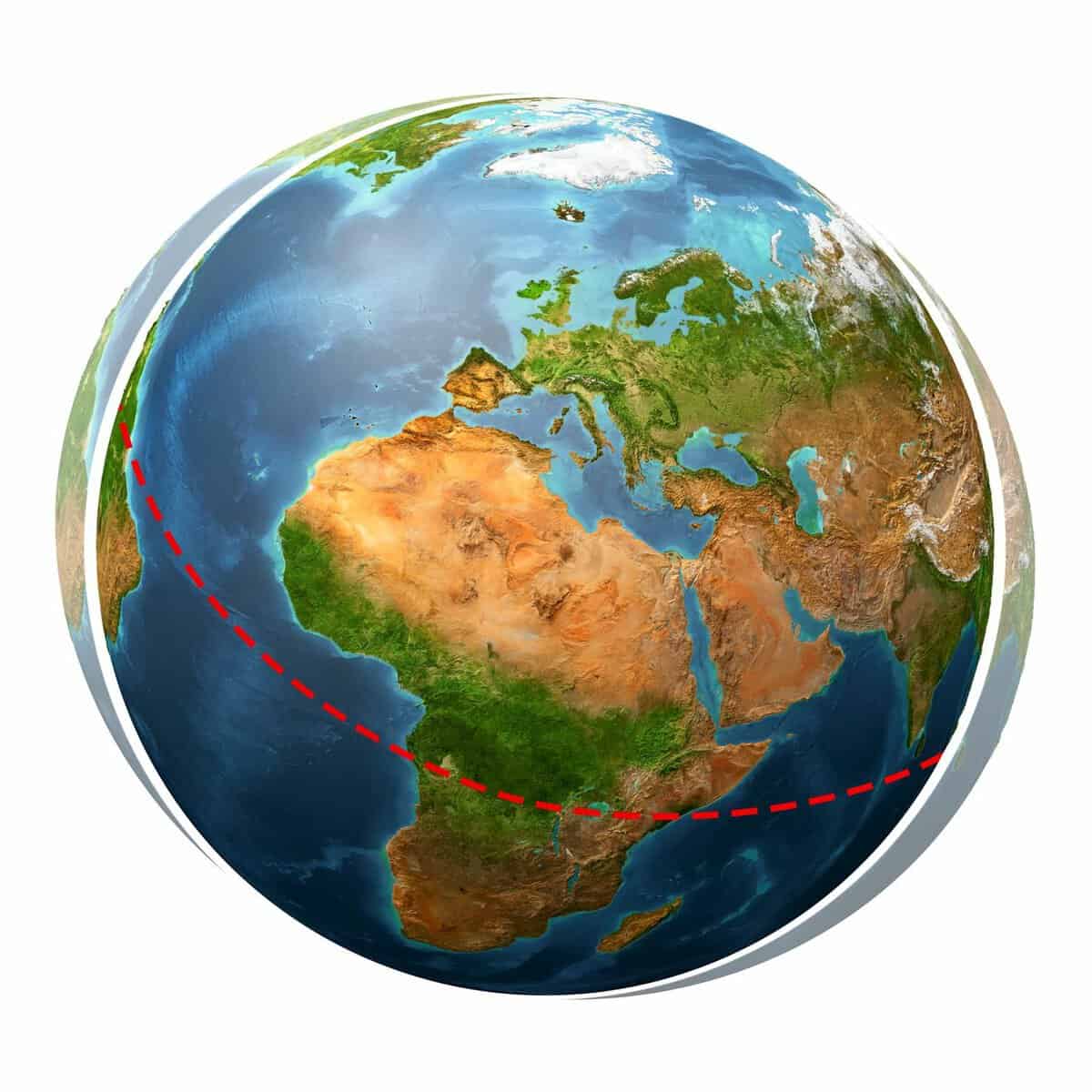
The widely accepted claim that ancient scholars believed the Earth to be flat is not entirely accurate. While it is true that some individuals held this belief, there were actually multiple theories, including one suggesting that the Earth was a sphere. Nowadays, it is widely acknowledged that the Earth is indeed a sphere and that it orbits around the Sun.
However, that is not the case. Whether for the purpose of amusement or for the sake of generating publicity, or perhaps due to religious beliefs, the global population has once again divided into two opposing factions on this matter. Are you taken aback? If an individual were to approach you and assert that the Earth is flat, would you respond with disbelief? Uh-huh. The notion that the Earth is a sphere (more accurately described as a geoid) and orbits around the Sun is widely recognized and, at first glance, appears to be beyond question? Well, that is no longer the case.
Is the Earth Round or Flat?
While modern science claims that the Earth is round, there is a group known as the Flat Earth Society that firmly believes otherwise. Their primary objective is to provide evidence that the Earth is flat, insisting that governments worldwide are involved in a conspiracy to deceive people by promoting the idea of a spherical Earth and concealing the truth about its flatness.
Despite the overwhelming scientific consensus, there are still people who support the Flat Earth Society and their argument.
- The planet Earth is a circular flat shape, measuring 40,000 kilometers in diameter, with its center located close to the North Pole.
- The sun, moon, and stars appear to move across the surface of the Earth.
- The concept of gravity is disregarded. Objects experience free fall acceleration due to the Earth’s upward motion with an acceleration of 9.8 m/s². This phenomenon can persist indefinitely due to the time distortion of space.
- There is no southern pole. Instead, Antarctica serves as the icy boundary of our circular disk, encircling our world.
- All photographs purporting to show the Earth from space are fraudulent.
- The distance between objects in the southern hemisphere is actually much greater than what is depicted on the flat Earth map. The discrepancy in flight durations can be attributed to a conspiracy involving airline crews.
- The Sun is a powerful searchlight with a diameter of 51 kilometers that orbits the Earth at a distance of 4800 kilometers and provides illumination.
- Everything that occurs is an experiment conducted on us.
- All scientific institutions are deliberately deceiving us about the Earth being spherical.
- The government is also lying, serving their masters, the reptiloids.
- There have been no space missions, let alone to the Moon, it is all a hoax.
- All the videos of space travel were actually filmed on Earth.
And so it continues. Gradually, the world divides into two halves. One group believes in the round and spherical shape of the Earth, while the other group believes it is round but flat.
Both sides present “irrefutable” evidence to support their respective views on the shape of the Earth.
Below are a few intriguing revelations about the cosmos from the perspectives of both adversaries.
The flatness of the Earth is supported by the following points:
01. THE HORIZON APPEARS FLAT WHEN OBSERVED DIRECTLY

Proof of a flat Earth: When you take a photograph, the horizon line appears flat and not curved.
Refutation of a flat Earth: To see if the horizon line is curved or flat in the frame, you would need to be at a much greater distance from the Earth’s surface. Images taken from space clearly show the curvature.
Response from flat Earth believers: They claim that all images from space are fake, created by NASA and similar organizations. They deny the existence of space.

The Bible contains numerous descriptions that suggest a belief in a flat-earth. For instance, in the book of Daniel (4:7, 8), it is written: “But the visions of my head on my bed were these: I saw, behold, in the midst of the earth a tree very high. It was a great tree, and strong, and its height reached up to heaven, and it was visible to the ends of the whole earth.”
This passage can only be interpreted as evidence for a flat earth.
However, it is important to note that this view is refuted by the scientific consensus, which supports the idea of a spherical earth. This refutation is particularly relevant when considering the perspectives of fundamentalist Christians.
The Bible does not serve as a scientific document intended to explain the intricacies of the universe. Instead, it employs figurative language and a comprehensible style to convey its message to the general population, drawing upon the knowledge available during its time of writing. Nevertheless, a close reading and interpretation of the Bible reveals no conflict with modern science, nor does it suggest that the Earth lacks a spherical form.
In this case, the description is given of the dream of Nebuchadnezzar, the king of the New Babylonian kingdom, who ruled from September 7, 605 to October 7, 562 BC. According to Daniel’s interpretation, the tree in the dream represents Nebuchadnezzar himself. It is important to note that the New Babylonian kingdom’s border should be considered as the edge of the Earth, as Nebuchadnezzar did not have dominion over the entire Earth. Furthermore, the dream is described as a vision, not a direct observation.
(Isaiah 42:5):"Thus says the Lord God, who created the heavens and their expanse, spreading out the earth with its works."
This interpretation can only be valid if the Earth is flat.
Refutation of the Spherical-Earth Theory: (from experts in biblical studies and polymaths):
This description pertains to what is now commonly known as continents. In the realm of modern science, continents are generally regarded as being flat. However, it should be noted that this does not imply that the entire earth is flat as well, even if we consider continents to be on a plane.
(Matthew 4:8): “Again, the devil takes Him [Jesus] up to a very high mountain and shows Him all the kingdoms of the world and their glory.”
This scenario can only be possible if the Earth is flat.
Rebuttal of the Spherical Earth Theory (by biblical experts and erudite scholars):
(Job 38:12,13.): Have you ever given instructions to the morning, or shown the dawn its place, that it would reach the ends of the earth and shake off the wicked…"
(Job. 37:3) "It tears itself apart beneath the entire sky, and it shines forth — To the ends of the earth.."
Only a plane can have edges.
A spherical refutation: (according to Bible experts and erudite scholars):
Job is reminded by God of the unchanging order of day and night. It is symbolically expressed that the dawn brings an end to the darkness and halts the wicked deeds that take place at night. The phrase “edge of the earth” is also used by those who understand that the Earth is spherical.
In the Bible, there are other mentions of the edges and corners of the Earth, which can be interpreted in various ways. For instance, they could refer to the boundaries of continents or countries. Furthermore, the Bible itself confirms that the term “earth” refers to dry land:
(Gen. 1:10) And God called the dry land the earth, and called the collection of waters the seas.
Thus, it is not possible to consider these texts as evidence supporting the notion that the Earth is flat.
03. THE BEDFORD EXPERIMENT.
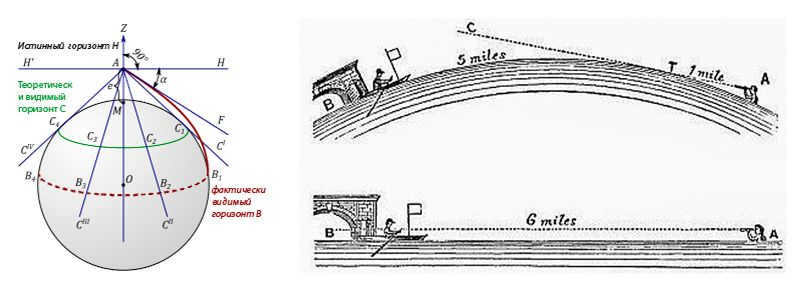
In 1838, Samuel Rowbotham conducted an experiment that is considered to be the most reliable proof of the Earth’s shape.
The experiment was quite simple. Rowbotham discovered a flat area measuring approximately 10 kilometers (6 miles) on the Bedford River. He positioned a telescope 20 inches (50.8cm) above the water surface and observed a distant boat with a five-meter mast.
Throughout the boat’s movement, the mast remained visible. This provided the basis for Rowbotham’s assertion that the Earth is flat.
If the Earth were spherical, the mast would have disappeared from view.
Source: If the temperature rises excessively, the visible horizon has the potential to elevate to the actual mathematical horizon. The surface of the Earth will appear to straighten out, giving the impression of a flat Earth, much to the satisfaction of flat-earthers. However, this is purely a visual perception. Under these circumstances, the range of visibility will become infinitely vast. The curvature of the light beam may align with the curvature of the globe.
Source: Grimaldi Francesco Maria (1618-1663), an Italian physicist and astronomer, is widely recognized as the individual who first discovered light refraction.
It is common knowledge that Samuel Rowbotham had a good understanding of the concept of refraction. It is only reasonable that the book containing experiments that proved the flatness of the Earth did not generate any interest among scientists. However, there were numerous supporters of this idea. One of Hemplen’s followers even wagered 500 pounds (a substantial amount at that time) that he could prove to any opponent that the Earth is flat. And an opponent was found in the form of scientist Alfred Wallace. Wallace, being fully aware of what he was doing, conducted the experiment in the same valley. However, he made a slight alteration to the observation. He utilized an intermediate point, a bridge, on which he fixed a circle. At the endpoint, a horizontal line was placed. The telescope, circle, and line were all positioned at the same height in relation to the water’s surface. If the Earth were indeed flat, a line would be visible through the circle’s center. Naturally, this did not occur. As a result, Hemplen refused to pay the designated amount and proceeded to accuse Wallace of being a liar and falsifier.
04. Antarctica has never been crossed by anyone before.
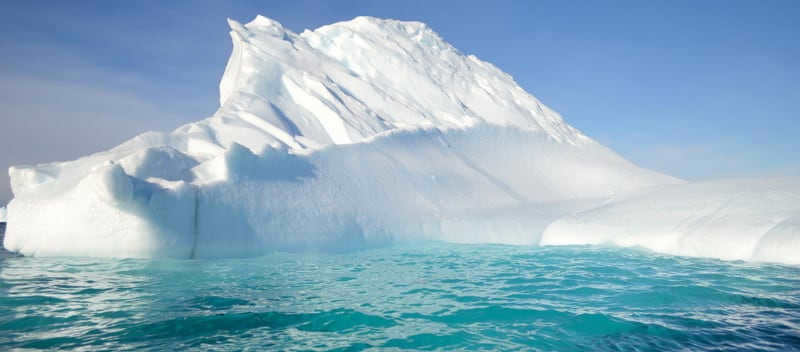
In an expedition led by Sir Vivian, a group of 12 individuals managed to traverse Antarctica in a span of 99 days, reaching their destination on March 2, 1958. This remarkable achievement marked the inaugural crossing of the Antarctic continent.
Naturally, adherents of the flat-earth theory dismiss this accomplishment as a fraudulent fabrication.
What is the nature of Earth?
Isn’t it about time we unveil the true account that Magellan merely circumnavigated in a loop, not around the Earth.
Cook embarked on a journey along the periphery of the Earth in search of Antarctica. And, by the way, he was correct: Antarctica is a mere fabrication!
Kruzenstern harbored doubts upon encountering Antarctica. He simply encountered an icy barrier that had been constructed to confine the oceans. It remains unclear how he managed to navigate around our disc-shaped Earth (yes, let’s refer to things by their accurate names) in 751 days. More conspiracy and deceit! He didn’t chart anything on the map, nor did he actually go anywhere; he was probably enjoying some beer in Australia, while they furnished him with pre-made maps, fabricated by NASO.
There is a widespread collusion among governments, scientists, pilots, police, and even intelligent individuals. This collusion is directed against honest individuals who have a deep understanding of the true nature of the universe. However, with the rise of the Internet, these enlightened individuals are now prepared to enlighten those who are still unaware of this collusion.


This is approximately the current appearance of this significant issue. So, what type of Earth do we truly inhabit? If you possess any factual information, kindly share it in the comments section. It is possible that you may discover inaccuracies in the article or have additional points to contribute, so please leave a comment. We will certainly make any necessary additions, and potentially even continue the discussion, taking into consideration all of your comments and suggestions. Kindly maintain appropriate behavior and refrain from belittling others or resorting to name-calling. Such actions are ineffectual. Only sound arguments and evidence pertaining to either a flat or spherical Earth will assist in resolving this situation.
The Earth’s shape is inconsequential because it is independent of humans and cannot have a greater impact on our lives than it already does.

The Solar System
The Solar System consists of nine planets, with Earth being the fifth largest and the third farthest from the Sun, following Mercury and Venus. It is situated in the Milky Way galaxy, at a distance relative to its center. Apart from the Solar System, there are approximately two hundred to four hundred billion stars in our galaxy that possess their own planetary systems. All of these numerous celestial bodies share a common characteristic – they exhibit a spherical shape, more specifically resembling a ball.
The gravitational force present in all material bodies with mass makes this shape the most common in nature. It is a well-known fact that everything in our surroundings, including ourselves, is composed of atoms that are influenced by various physical forces, gravity being one of them. Due to the gravitational force, atoms of matter tend to move towards the center, and this force affects all atoms uniformly. This is why the heaviest substances and metals are concentrated closer to the core of our planet, while light gases are primarily found in the stratosphere and exosphere.
Cosmic objects with lower mass, like asteroids, exhibit an irregular form that deviates from the spherical shape. This is due to the influence of gravity, or more accurately, the lack of strong enough gravitational force. Despite their often enormous size, asteroids lack the necessary mass to generate their own gravitational pull.
Consequently, they are unable to attract matter from space and therefore cannot accumulate mass over time to be classified as dwarf planets. The only possible exception would be supergiant asteroids with a diameter of 300 kilometers or more, as their mass is sufficient to generate gravitational forces capable of gradually molding them into a spherical shape.
What caused the Earth to take on its round shape?
The process of the Earth becoming round can be traced back to the formation of celestial bodies, such as stars, planets, and asteroids. These bodies were created over an immense span of time from dust clouds and gases, which originated from stellar explosions. While there are various theories regarding the Earth’s formation, they all share a common belief that the planet took shape as matter gravitated towards a central object. The gravitational force of this object played a pivotal role in this process.
Over the course of billions of years, matter gravitated towards this entity, which grew in mass, causing the gravitational force to intensify. As the mass accumulated, the pressure at the core of the planet escalated, leading to a rise in temperature. Consequently, a molten mass of matter took shape, assuming a spherical form under the influence of gravity. Through these processes, planet Earth came into existence approximately four and a half billion years ago.
What is the true form of our planet, Earth?
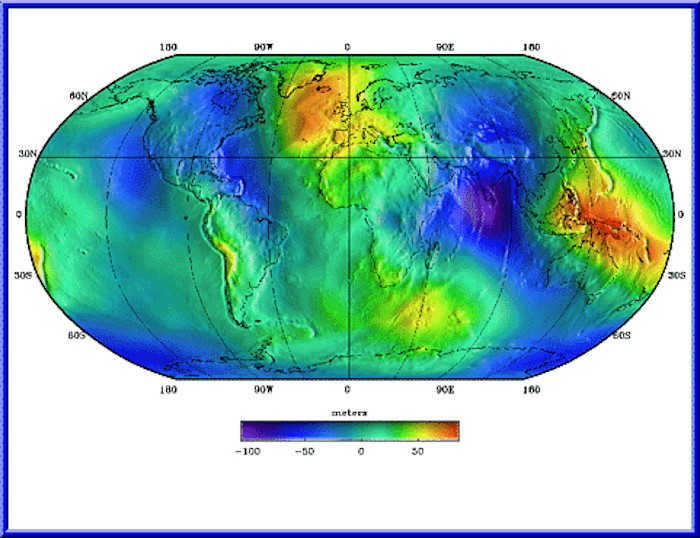
Both on Earth and in space, the laws of physics generally apply. One law of physics asserts that when an object rotates, there exists a centrifugal force inside it that acts on its atoms, pushing them away from the axis of rotation.
As the Earth spins on its axis, it also experiences a centrifugal force within it, which pushes in the direction of the axis of rotation from the equatorial line. This is why the Earth does not have a perfect spherical shape, but rather takes on the form of an ellipsoid that is flattened at the poles. Consequently, the diameter of our planet is 43 kilometers smaller at the poles compared to the diameter near the equator line.
Fascinating fact: Mount Everest (Jomolungma) is recognized as the highest peak on Earth, towering at an impressive altitude of 8848 meters above sea level. Situated in the Himalayas, a significant distance away from the equator, Everest boasts its majestic status. On the other hand, in Ecuador, situated exactly on the equator line, lies Mount Chimborazo, which stands at a slightly lesser altitude of 6384 meters above sea level – over two and a half kilometers lower than Everest. Surprisingly, if we were to measure the height of these mountains not from sea level but from the Earth’s central point, we would find that Mount Chimborazo surpasses Mount Everest in terms of elevation.
The laws of physics determine the forms of celestial objects. When subjected to gravitational force, massive objects tend to adopt a spherical shape, which is optimal when not influenced by other forces. However, the presence of centrifugal force disrupts the ideal spherical shape of a rotating celestial body, causing it to become elongated away from its axis of rotation. As a result, the Earth has an elliptical shape, with a difference in diameter of 43 kilometers from north to south and east to west.
Objects with minimal mass and gravity cannot accumulate substances found in space on their surfaces. As a result, they have irregular shapes and, even after millions of years in space, are likely to remain as lonely fragments of once larger planets. Unless, of course, they come into contact with a planet with which they can merge. However, let’s not refer to this planet as Earth!
An intriguing video about the Earth’s shape
In case you come across any mistakes, kindly select the text and hit Ctrl+Enter.

There are a handful of aspects in our existence that appear entirely evident to us. We don’t even contemplate whether they are factual or not. For instance, nowadays no one harbors any uncertainties that the Earth is spherical. Nevertheless, if you presume that everyone is persuaded, you are sorely mistaken. Every year, there is a mounting number of proponents who firmly hold that our planet is, in fact, flat. The arguments they present will be elucidated in this piece.
Travel back in time to the Medieval era
Advocates of the flat Earth theory continue to espouse the same arguments that were prevalent in the 14th century. They envision the Earth as a flat plate, and not even esteemed scientists can sway their conviction.
Just recently, Denver hosted the second International Conference dedicated to the “Flat Earth” concept. The event featured a series of seminars, debates, and presentations.
During the conference, attendees exchanged and discussed new theories that further supported their steadfast beliefs.
Champions of the Truth.
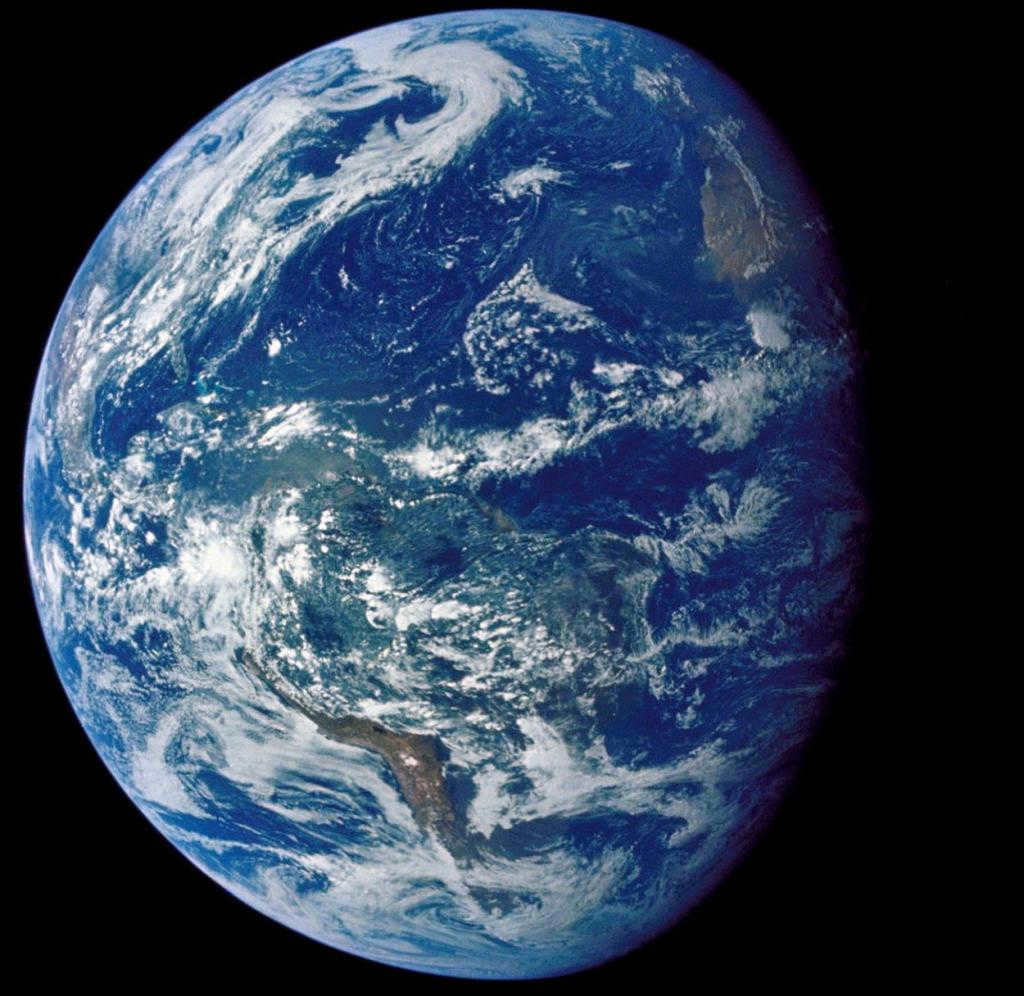
One of the advocates of this theory is Nate Thompson. He claims to have already faced consequences for his beliefs. The law firm that employed him terminated his contract before he could be convinced to abandon his conviction that the Earth is flat. He remains steadfast in his beliefs.
Central to their ideology is the notion of a flat Earth. Former U.S. Marine Sergeant Miguel Angel asserts his unwavering belief in the validity of the flat planet theory.
He asserts that when he gazes at the Earth, he perceives it exactly as it is described by the proponents. He insists that he can personally attest to the roundness of the planet only from the vantage point of space. Unfortunately, he has never had the opportunity to witness it himself. He considers all the videos and photos presented by astronauts to be fabricated.
He remains unconvinced by the scientists’ calculations that proved the true shape of the Earth a thousand years ago. The ex-Marine asserts that history is shaped by the victors, and believes that during that time, the advocates of a particular theory emerged as winners, thereby making their perspective the accepted truth.
Antarctica is the end of the Earth
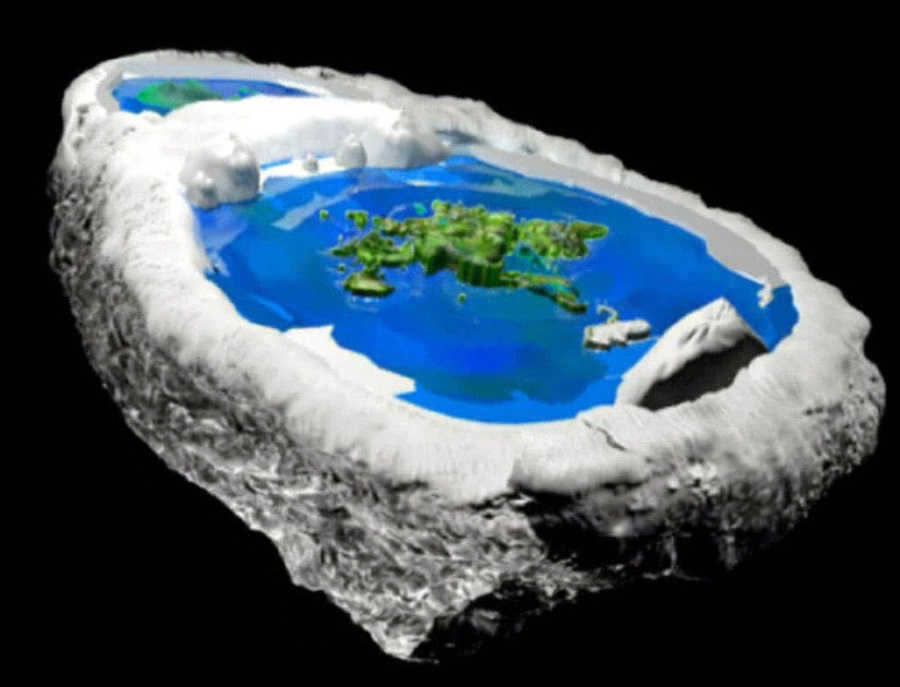
According to advocates of the flat Earth theory, Antarctica is a massive ice wall that stands 30 meters high and encircles the outer perimeter of our disk-shaped planet. This is the prevailing belief among flat Earth proponents.
While there is no concrete evidence to support this theory, its proponents argue that this is due to the fact that Antarctica is immeasurable, making it impossible to prove or disprove their claims.
In an effort to further support his position, Nate Thompson points out that scientists are unable to determine the exact location of the edge of space when asked. This leads him to question whether the edge of space even exists. However, Thompson and his supporters are often challenged by scientists who demand that they provide a definitive answer regarding the location of the edge of the Earth.
According to the 1961 Antarctica Treaty, which was agreed upon by all nations, it is confirmed that the Earth is flat. The reason for this agreement, as stated by Thompson, is that it is impossible to encircle Antarctica. This is in accordance with maritime law, which requires the ability to encircle a territory in order to claim ownership of it.
Who benefits from the belief that the Earth is spherical?
This topic is also being discussed at the conference, and one of the speakers, Darryl Marble, has an interesting perspective. According to Marble, the organization that benefits the most from promoting the idea of a round Earth is NASA. He argues that if the Earth was proven to be flat, NASA would lose its funding, which amounts to a staggering $52 million per day.
Marble then delves into the realm of conspiracy theories, mentioning the involvement of the Jesuits, the Freemasons, and other powerful entities who allegedly control the world. It seems that no gathering of flat Earth proponents is complete without speculation about a secretive global government.
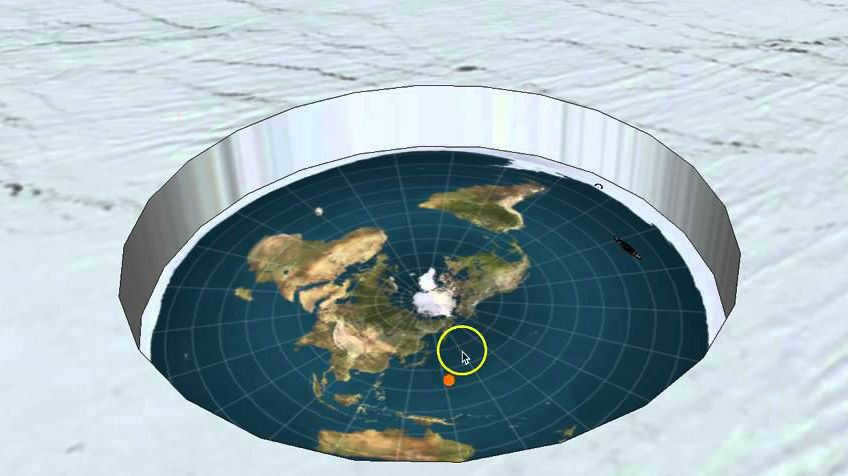
Nate Thompson asserts that he has conducted numerous experiments that challenge the notion that our planet is spherical.
A substantial number of his adherents also maintain that they have performed their own experiments, which they refer to as observational science. While not all of them concur that the Earth is completely flat, they steadfastly hold the belief that the world is not a sphere.
Specific arguments
There are various pieces of evidence that supporters of the flat Earth theory use to support their claims.
One such argument is the denial of gravity. According to this theory, the Earth is believed to be shaped like a disk and constantly moving upwards at a speed of 9.8 meters per second.
Another argument is the rejection of the Earth’s rotation. Flat Earth proponents argue that if the Earth were really rotating, anyone who jumped off the ground would land in a different place because the Earth would have rotated during their time in the air. They refuse to acknowledge the fact that the atmosphere surrounding the Earth also rotates along with it.
According to their perspective, airplanes serve as a primary testament to the flatness of the Earth. They firmly believe that if our planet were a sphere, no aircraft would be capable of successfully landing. This is due to the constant rotation of the Earth, which would cause a landing strip to continuously move away from an aircraft aiming for a specific location.
Furthermore, they maintain the belief that airplanes can only traverse vast distances over a flat surface. They argue that if the Earth were curved, aircraft would regularly escape the atmosphere during their flights.

According to their beliefs, the UN flag presents an accurate representation of our world. In this depiction, the Earth takes the form of a disk, with the North Pole positioned at the center and the South Pole completely absent. Additionally, Antarctica is portrayed as an impenetrable ice wall that cannot be surpassed.

One more point to consider is that the Earth is flat due to the divergence of the sun’s rays from the horizon. This can be witnessed during cloudy weather at sunrise or sunset. Supporters of this theory argue that it serves as evidence that the Sun is positioned directly above the Earth. According to them, if the Sun were millions of kilometers away, the rays would fall straight down. However, they fail to acknowledge that the rays traverse through clouds in the process.

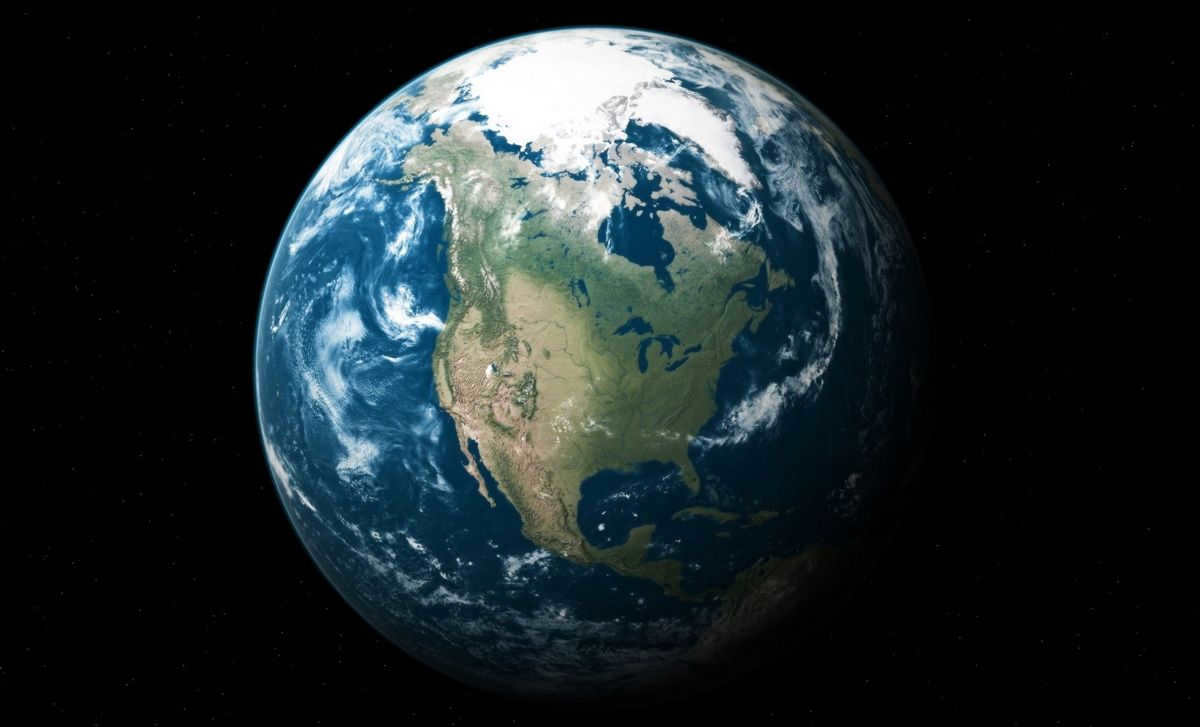
Astronomy
Our planet, Earth, is positioned as the third celestial body from our star, the Sun. It stands out among the other planets in our solar system due to its ability to sustain life. Earth is extensively explored, and its various characteristics are well-documented. It is classified as one of the terrestrial planets, alongside Mars, Venus, and Mercury. Orbiting the Sun in a specific trajectory, Earth possesses a distinct climate that has fostered the development of life on its surface.
Formation of the Earth: A Journey through Time
The Earth, along with its celestial companions, came into existence approximately 4.54 billion years ago within the vast expanse of the solar system. This remarkable event was preceded by the presence of a colossal protoplanetary cloud, a cosmic nursery of sorts, which gradually started to spin in graceful motion. Deep within this celestial cradle, countless particles collided and merged, giving birth to the remarkable celestial bodies we now call planets.
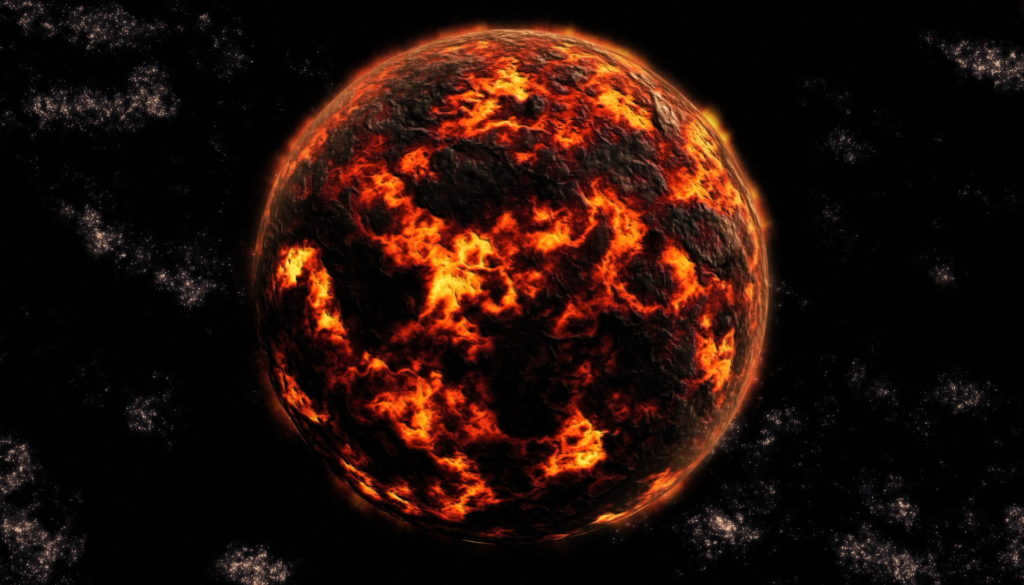
Fascinating fact: It took 10-20 million years for the Earth to form and transform into a planet, but its appearance and structure were far from what we know today.
Originally, the Earth was a scorching celestial body, but over time, it gradually started to cool down. As the temperature decreased, a solid crust formed on the surface. Then, around 10 million years later, a celestial body called Theia collided with our planet. This collision caused fragments to be ejected at a certain distance, eventually forming the Moon.
The planet developed an atmosphere due to volcanic activity and the reactions occurring within the rocks. As a result, water condensed and formed the World Ocean. Approximately one billion years later, Earth developed a magnetic field that shielded it from solar winds. Around 3.3 billion years ago, the planet had the necessary conditions for life to emerge.
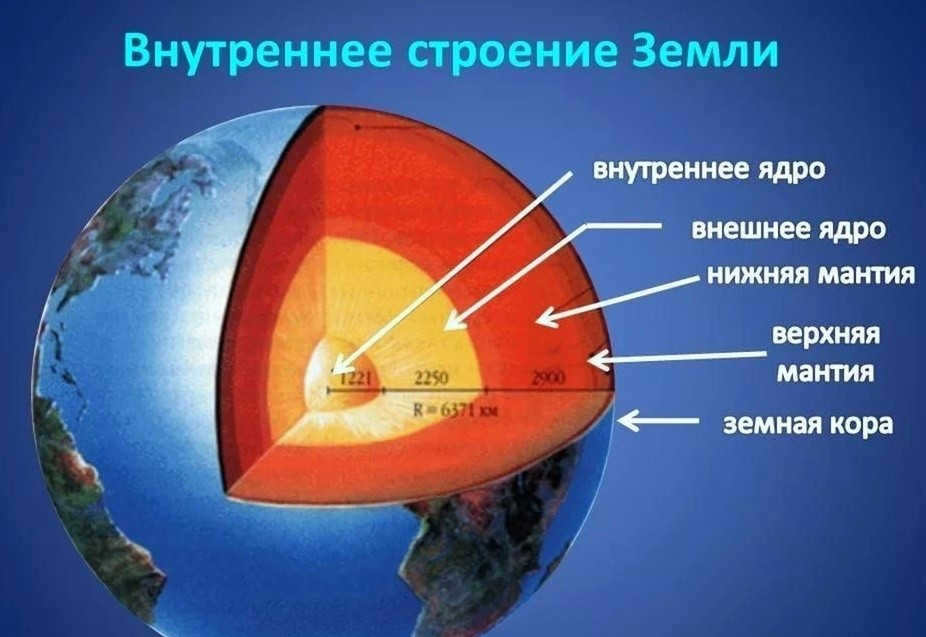
The Earth’s core is made up of two parts: the inner core and the outer core, with radii of 1300 km and 2200 km respectively. The temperature at the center of the planet can reach a scorching +5000 degrees Celsius. Surrounding the core is the mantle, which makes up about 84% of the Earth’s composition. The mantle is further divided into upper and lower sections. The outer layer of the mantle, known as the lithosphere, begins at a depth of 2900 km below the surface.
Fascinating fact: The mantle layer accounts for 67% of the total weight of our planet, the third one from the Sun.
The lithosphere is approximately 100 km thick and consists of the crust, which acts as the Earth’s shell. The crust is about 50 km thick on land and 10 km thick at the bottom of the oceans. The lithosphere is composed of large plates that have a tendency to move.
Magnetism
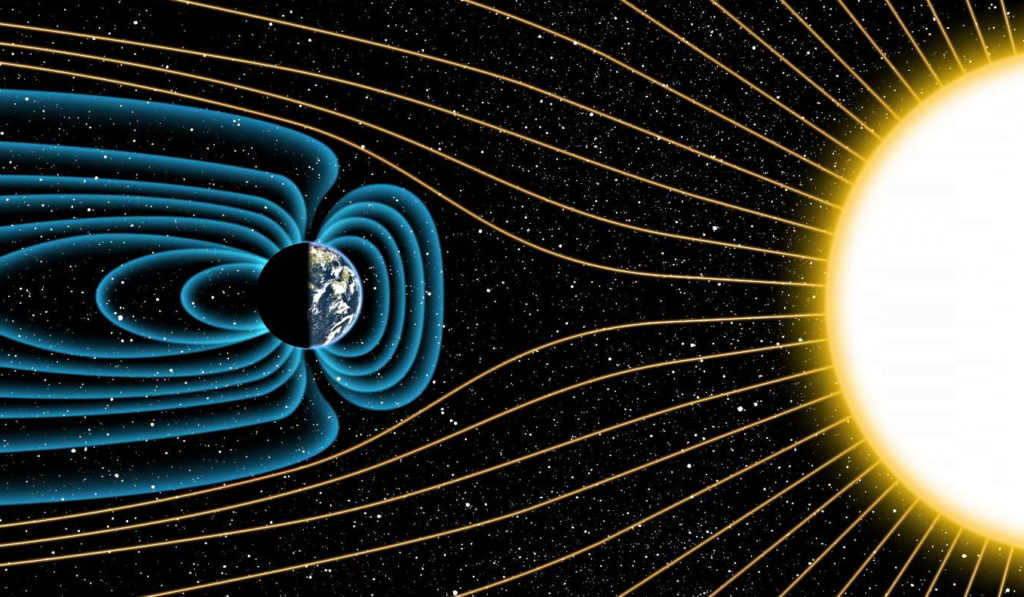

The Earth is in a constant state of rotation around its axis. As a result of this rotation, the core of the planet generates a magnetic field known as the “magnetosphere” which envelops it. This magnetic field is closely connected to the Earth’s North and South poles. When solar flares occur on the Sun, a multitude of ionized gas particles collide with the Earth, leading to interactions between the two. These interactions cause significant fluctuations in the Earth’s magnetic field, known as magnetic storms. Some individuals may experience the effects of these fluctuations, such as migraines and headaches.
An excellent example of the impact of magnetic storms is the phenomenon of polar lights. When the solar wind collides with the atoms in the Earth’s atmosphere, it produces a distinct glow in space.
Studying the northern lights has provided valuable insights into the occurrence of pole reversals on Earth, which happen approximately every 100,000 years. However, the exact cause of this phenomenon remains unknown due to insufficient data.
Earth’s Atmosphere
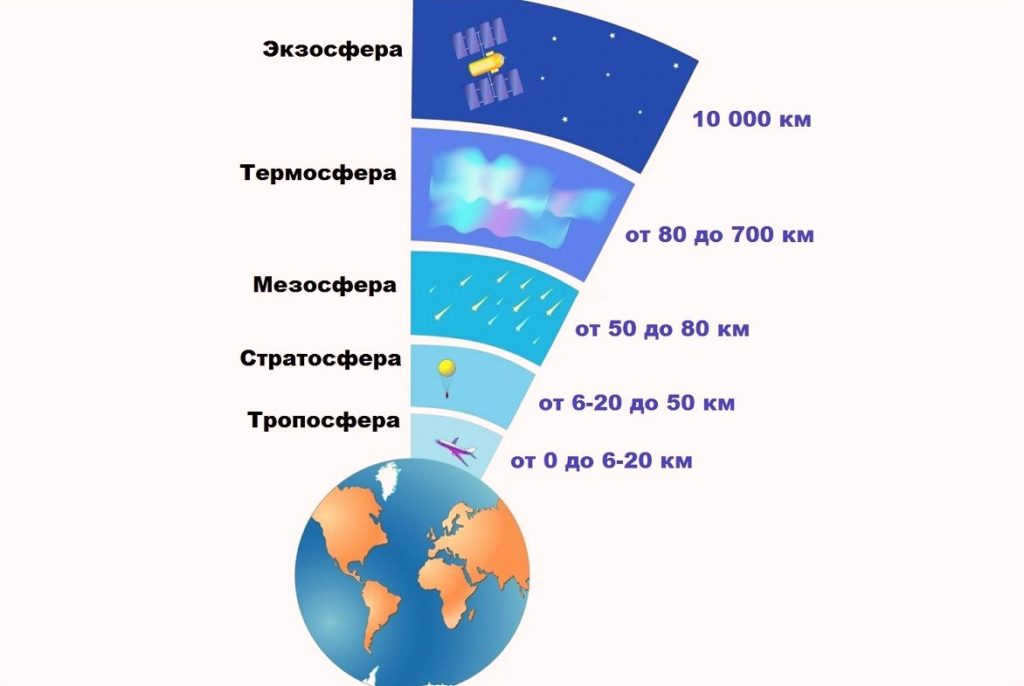

The presence of an atmosphere on Earth allowed for the development of complex life forms. The Earth’s atmosphere is structured into several layers, with each layer containing different substances. In the past, the atmosphere consisted of carbon dioxide, hydrogen, methane, ammonia, and water vapor. However, over time, most of these elements have escaped into space, leaving only a few remaining held in place by the Earth’s gravity.
As altitude increases above the planet’s surface, the concentration of substances in the atmosphere decreases.
It’s fascinating to note that humans can only breathe in the troposphere. Beyond a distance of 7 km, they require an additional oxygen source, and at an altitude of 15 km, breathing becomes impossible due to atmospheric pressure.
At the edge of the exosphere lies the outer space, a region that is nearly devoid of matter. It contains only hydrogen atoms, but their density is so minimal that the likelihood of their interactions with one another approaches zero.
Barren terrain
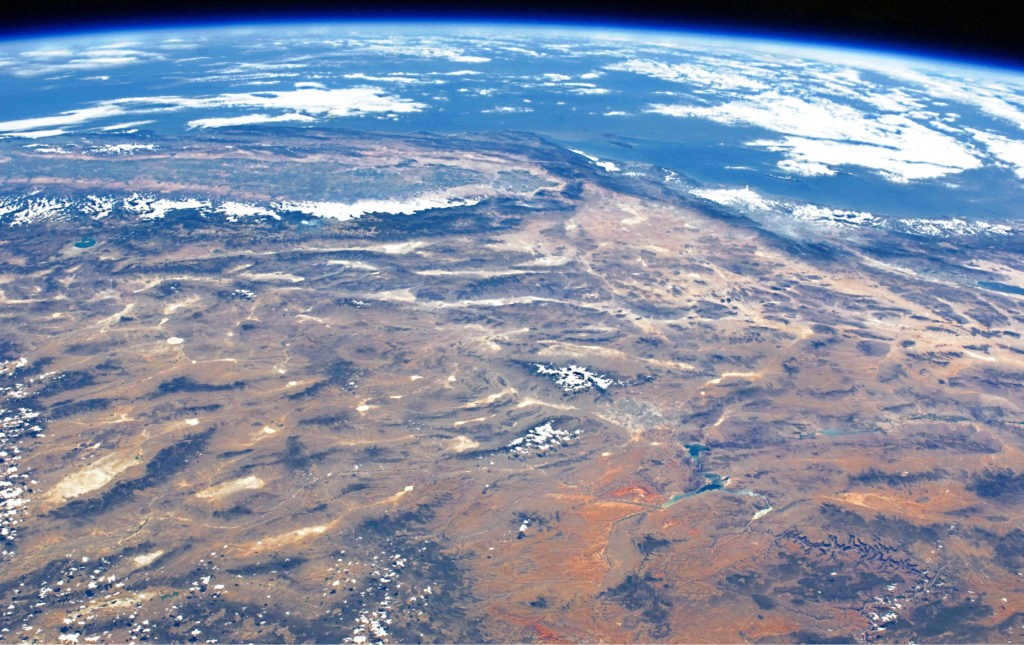
The Earth’s surface is composed of both land and oceans, with the land area being smaller in size but having a diverse and unique landscape. It is made up of various features such as mountains, plains, forests, deserts, and other territories.
Did you know?: The Earth’s land area covers approximately 134.7 million square kilometers, which accounts for 29.1% of the planet’s total surface area.
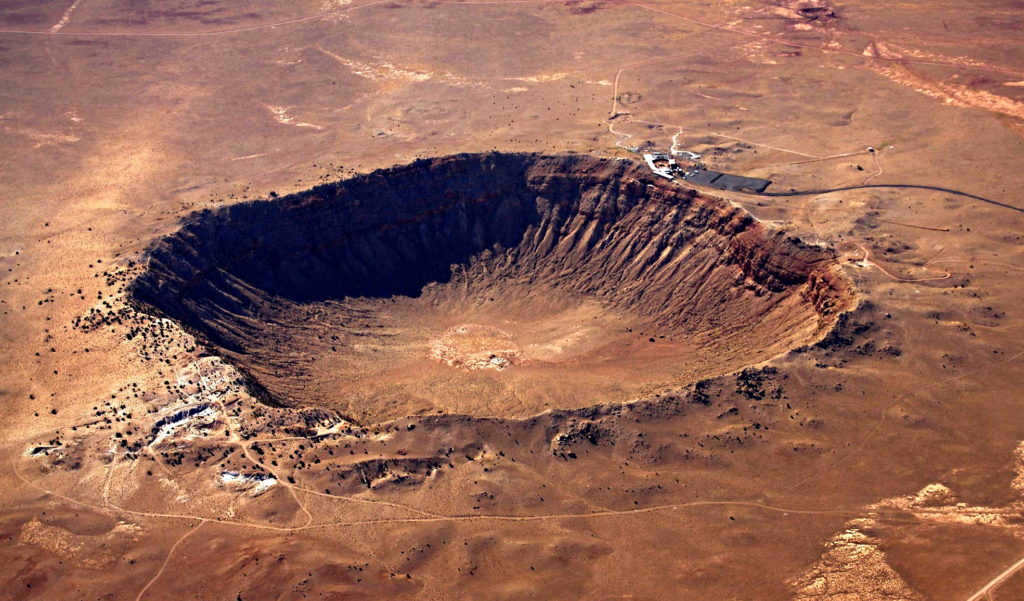
Scientists have identified two primary causes for the gradual “erasure” of craters on Earth: erosion and weathering. Both of these processes occur at a slow pace and their effects may only become noticeable over a long period of time.
Erosion is the process through which water particles, soil, and wind act upon the surface, gradually smoothing out any irregularities and creating a flat land area. Weathering, on the other hand, involves the breaking down of the surface into smaller fragments, such as when a riverbed is slowly worn away by sediment in the water. These two processes play a significant role in the complete disappearance of craters over time. Additionally, the formation of new craters has become impossible due to the presence of Earth’s atmosphere, which causes meteorites to burn up upon approaching the surface.
Paleontologists have a hypothesis regarding the emergence of land on Earth. The release of magma from faults during volcanic activity gradually cooled and solidified, sometimes forming entire islands that emerged from the ocean.
The movement of tectonic plates also played a role in the formation of land at one point. When these plates overlapped, they created mountains and elevated land areas.
About 70% of the Earth’s surface is covered by the world’s oceans. Even when observing the planet from space, it is evident that a large portion of the celestial body is blue. The presence of liquid water is a unique characteristic that sets Earth apart from other objects in the solar system.

The Earth’s oceans formed approximately 3.8 billion years ago, leading to the emergence of life. Initially, aquatic organisms appeared, and later, through the process of evolution, they transitioned to land.
There are two theories regarding the formation of the world’s ocean. When the Earth was created, it absorbed a significant amount of water vapor present in space. This vapor remained beneath the surface for a considerable period, but when geological activity commenced, it was released. Upon entering the atmosphere, the vapor condensed and precipitated onto Earth in the form of water. The second theory suggests that in the past, the planet was bombarded by meteorites that comprised mostly of ice. Over time, this ice melted, giving rise to water bodies.
Origin of Life on Earth
Earth is home to a diverse array of organisms that have adapted to different environments. While some species thrive on land, others have evolved to survive in water. The scientific community continues to grapple with the enigma of how life originally emerged on our planet, and a consensus has yet to be reached.

The primary hypothesis is based on the interaction of gases and chemical reactions. It is reasonable to assume that the initial life forms emerged when the Earth already possessed an atmosphere and a magnetic field. The belief is that electromagnetic storms triggered reactions in the gases present above the planet’s surface. As a result, amino acid particles were generated and deposited into the ocean. Once immersed in the aquatic environment, these particles continued to evolve and transformed into single-celled organisms.
Fascinating fact: Experiments have demonstrated that it takes several million years for an amino acid particle in water to develop into a simple living organism.
Distinctive Features of the Planet

The Earth possesses the following attributes:
- The planet has a mass of 5972*10^21 kilograms;
- The equatorial radius measures 6371 kilometers;
- The Earth’s axial tilt is 23.5 degrees;
- The density is 5.52 g/cm3;
- The surface temperature ranges from -85 to +70 degrees Celsius;
- A day on Earth lasts 23 h 56 min 4 s;
- Throughout the year, the planet is on average 149.6 million kilometers away from the Sun;
- The orbital velocity is 29.8 kilometers per second;
- A year on Earth lasts 365.25 days;
- The eccentricity is 0.017;
- The acceleration of free fall on the surface is 9.8 m/s2;
- The Moon serves as the sole natural satellite of the Earth.
Orbit and rotation
The Earth revolves around its axis in an eastward direction, completing a full rotation in 23 hours, 56 minutes, and 4 seconds. It takes approximately 4 minutes and 15 seconds for the planet to rotate one degree. The rotation rate of the Earth varies depending on the time of year, with the duration of a day increasing by 0.001 seconds in April and November.
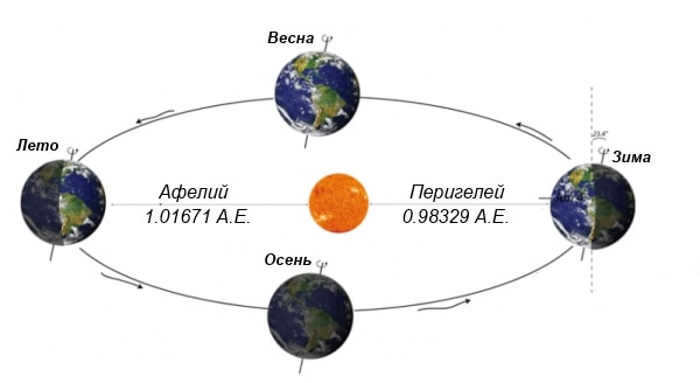

Did you know? Over the past two millennia, the time it takes for the Earth to complete one full rotation on its axis has increased by 0.0023 seconds.
The Earth orbits the Sun in an elliptical path, with an average distance of 150 million kilometers. It moves at a speed of 29.8 km/s. It takes 365.25 days for the Earth to make a complete revolution around the Sun. Additionally, the Earth, along with the entire solar system, also moves in relation to the center of the Milky Way galaxy at a speed of 20 km/s.
What is the origin of the name “Earth”?
For centuries, humanity has referred to the planet we inhabit as “Earth.” Despite the variations in how different languages refer to this celestial body, the name itself has remained consistent throughout history. But what is the story behind this name?

Like many other celestial bodies in our solar system, Earth is also named after a deity. Throughout history, different cultures have associated their gods and goddesses with various planets. In Scandinavian mythology, the goddess Yord symbolized the fertility of the land. The Romans revered Tellus (Terra), while the Greeks worshipped Gaea.
Various versions of the planet’s name have originated from these ancient civilizations and are still in use by different cultures today. One example is the English name “Earth,” which derives from the goddess Yord. This is how English-speaking people refer to the third planet from the Sun. In astrology, the celestial body is known as Terra, a name that was inspired by the Roman goddess Tellus.
In Russian, the planet is called “Earth.” The name is rooted in the word “Zem,” which translates to “soil.” Most languages have a similar meaning for the name of the planet, but it is pronounced differently.
Our planet’s natural satellite, the Moon
The Moon is the solitary satellite orbiting around Earth, constituting approximately 25% of the planet’s volume. Due to the presence of gravitational forces between these celestial bodies, the phenomenon of tides manifests in the Earth’s oceans.
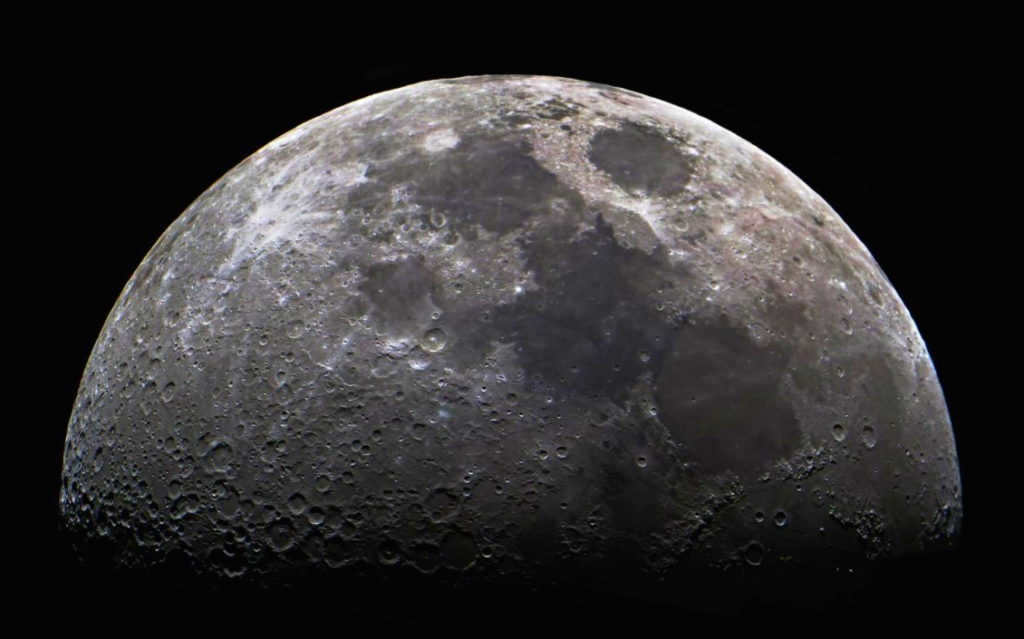
The moon is the only natural satellite of the Earth.
Fascinating fact: The Moon’s rotation on its axis is synchronized with its orbit around the Earth. As a result, we always see the same side of the Moon from Earth.
According to the prevailing theory, the Moon formed after a collision between Earth and a protoplanet called Theia. Theia collided with Earth, causing debris to be ejected into space. Over time, this debris came together and formed the Moon.
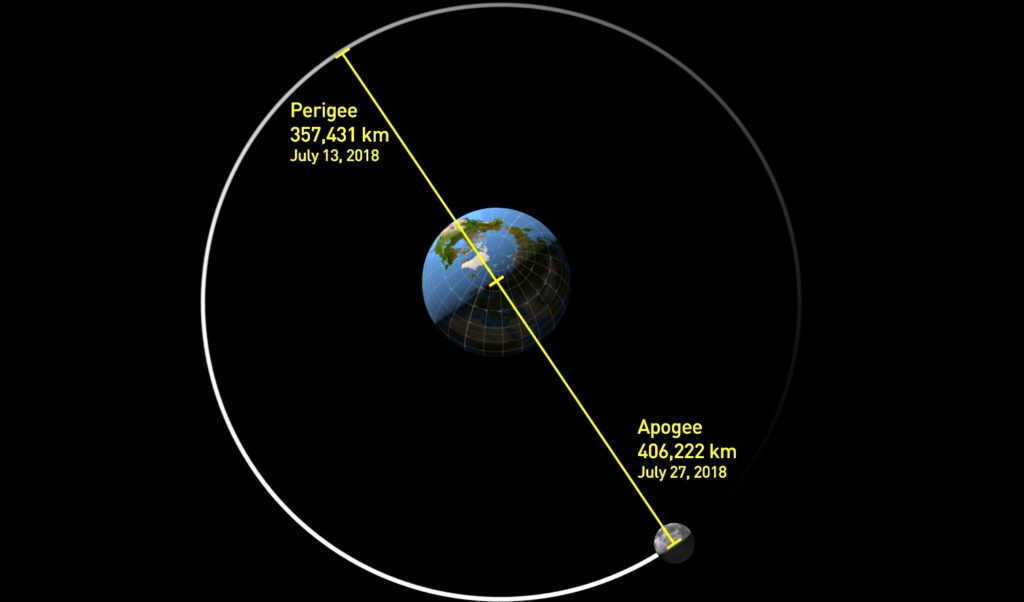

Currently, the Moon is located 384,400 km away from Earth, and each year this distance increases by 38 mm. As a result, the length of a day on Earth becomes longer and the duration of a year becomes shorter. In the short term, these changes may not be noticeable, but when we consider the situation in the distant future, the scenario becomes significantly different. For instance, 410 million years ago, a year lasted approximately 400 days, and each day had an average duration of 21 hours and 48 minutes.

In 1959, humanity was given a unique chance to observe the planet from outer space. The American satellite Explorer-6 successfully entered the planet’s orbit and captured an image. Just two years later, Yuri Gagarin became the first person to venture into space and witness the Earth firsthand.

In 1968, the crew of the Apollo 8 mission was taken to the moon’s orbit, where they had the opportunity to witness the sunrise of our planet from behind a satellite. Four years later, during the Apollo 17 mission, a photograph of Earth was taken. This image quickly became famous and earned the nickname “The Blue Marble”.
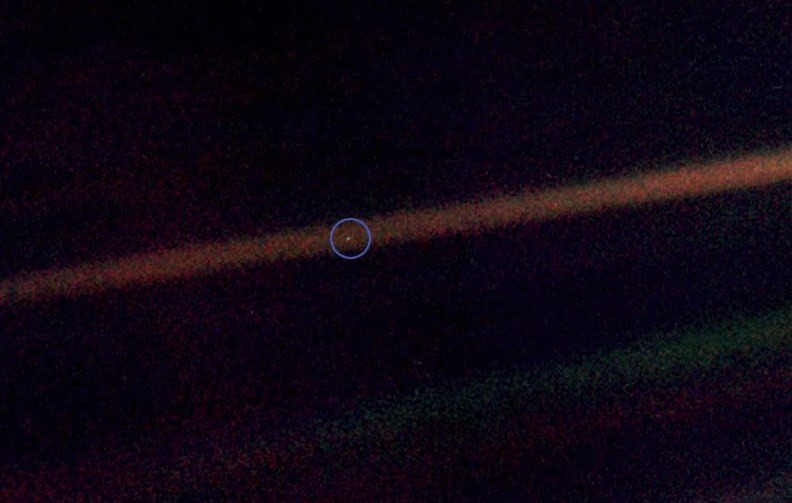
In today’s era, a vast array of satellites and spacecraft are constantly observing the Earth from the vast expanse of space. The crew members aboard the International Space Station (ISS) are fortunate enough to witness the awe-inspiring sight of our planet on a daily basis. Additionally, certain spacecraft capture breathtaking images of Earth while orbiting distant planets or embarking on interstellar journeys, providing unique perspectives from varying distances.
Possible hazards
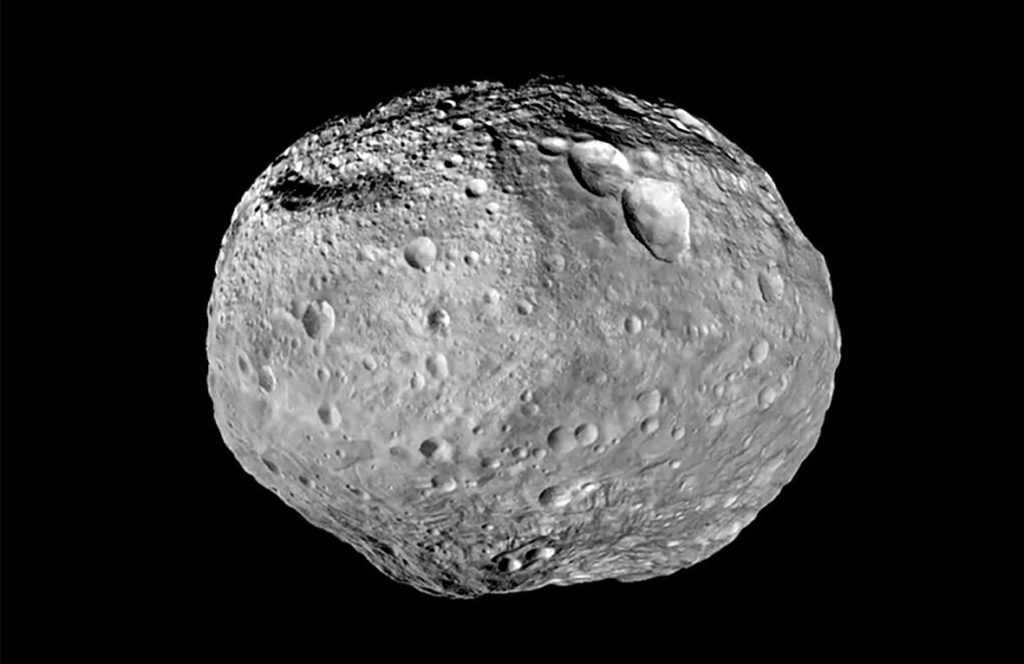
While the majority of celestial objects disintegrate upon entering the Earth’s atmosphere, there remains a possibility that certain meteorites may still impact the surface. Scientific evidence confirms that in the event of an asteroid, measuring several thousand kilometers in diameter, colliding with the planet, it would be sufficient to cause the extinction of nearly all life forms.
Did you know that out of all the asteroids classified as “approaching,” only 20% actually have the potential to harm our planet?
What lies ahead for Earth?
The destiny of planet Earth is intricately tied to its host star, the Sun. This celestial body, over time, undergoes a process of helium accumulation which gradually intensifies its luminosity. As an illustrative example, in the span of 1 billion years, it is projected that the Sun’s radiance will augment by 10%. This augmented brightness, however, poses a predicament for Earth as it would result in an excessive influx of solar wind, rendering the ozone layer inadequate in shielding against its detrimental effects. Consequently, the temperature above the Earth’s surface would begin to escalate. Such a rise in temperature could potentially trigger the evaporation of the world’s oceans. Furthermore, this environmental shift would lead to a decline in the carbon content on the planet, ultimately resulting in the extinction of plant life, which is anticipated to occur within the next 500-900 million years. Consequently, the diminished presence of oxygen in the atmosphere would render it inhospitable for the majority of living organisms. Only species that possess minimal oxygen requirements would thrive in such conditions, enabling their survival in temperatures of up to +70 degrees Celsius.
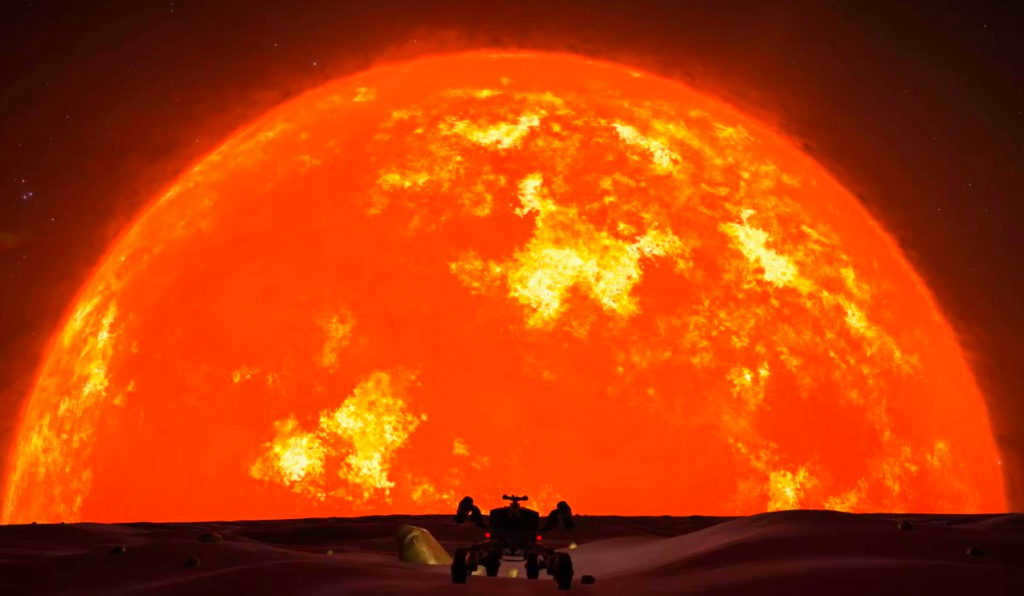
In approximately 3.5 billion years, the Sun’s luminosity will augment by 40%. As a result, the Earth’s surface will become extremely hot, causing the water to entirely transform into vapor and rendering life virtually impossible.
After around 7 billion years, the Sun will deplete its hydrogen reserves and transform into a red giant. Consequently, the star’s radius will expand, surpassing the Earth’s orbit in size. However, during this time, the planet may drift further away from the Sun due to the weakening gravitational force. The surface temperature of the Earth will reach approximately +1370 degrees Celsius.
Fascinating video discussing the Earth
If you happen to come across any inaccuracies, kindly select the text and press Ctrl+Enter.
Indeed, there are individuals who maintain the belief that the Earth is flat. Amusing evidence supporting their theory can easily be debunked by even a young student. Thus, we have a clash between flat-earthers and those who understand the Earth is round. Let’s delve into it!
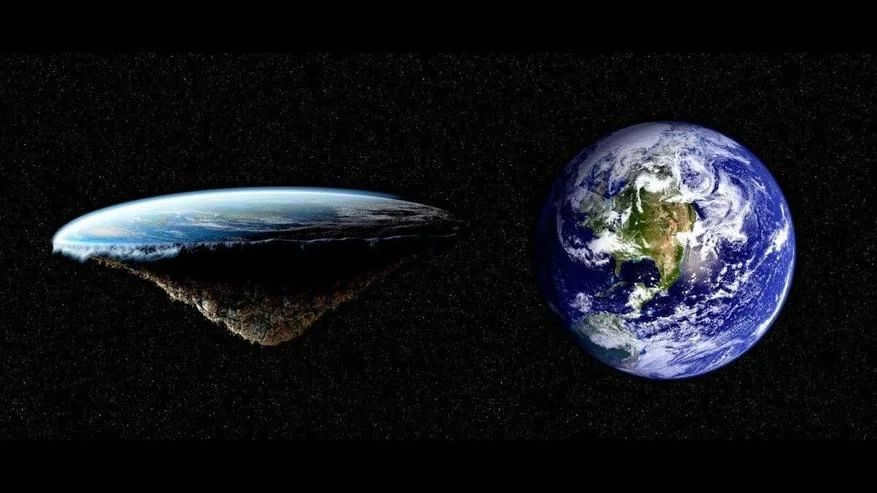
So, what are the beliefs of those who advocate for a flat Earth?
- They believe that the Earth is a flat disk with a diameter of 40000km and is centered at the North Pole.
- According to them, the stars, the Sun, and the Moon all revolve around the Earth.
- They deny the existence of gravity.
- They claim that there is no South Pole and that Antarctica is merely a massive ice wall that encircles the world.
- They assert that the pictures of the Earth taken from space are fake.
- Furthermore, they argue that Space itself is also a fabrication, and that rocket and satellite launches are nothing more than a hoax.
- They contend that the distances between objects in the southern hemisphere are much greater than what is commonly believed, suggesting that those objects are located near the edge of the flat disk.
Gravity is non-existent
This argument is my personal favorite. The supporters of the flat earth theory claim that gravity is a mere unproven concept, similar to torsion fields and aether energy.
According to their perspective, objects fall towards the Earth because it is constantly accelerating at a rate of 9.8 meters per second, which is precisely the acceleration of free fall. It is important to note that this acceleration is not a constant velocity, but rather an acceleration. Acceleration. Therefore, every second, the Earth’s velocity increases by 9.8 meters per second.
Considering that there are 3600 seconds in an hour, the Earth’s velocity would increase by 35280 meters per second in an hour, and by 846 kilometers per second in a day. Continuously accelerating at a rate of 9.8 meters per second, our planet would reach the speed of light in 354 days, which is slightly less than a year.
Nonetheless, it is conceivable that individuals who advocate for a flat earth theory do not take into account the speed of light, which is limited to 300,000 km/s. Why doesn’t it simply disperse instantaneously? However, if there is no space (as discussed below), then where is the Earth disc heading, especially at such a velocity?
The stars, the sun, and the moon revolve around the Earth.
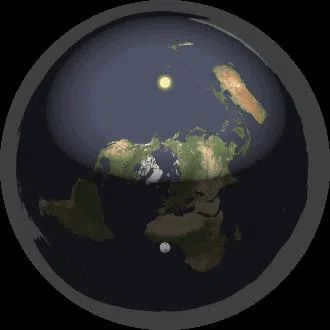
Observe the moon. Its waxing and waning are caused by the earth’s shadow. Therefore, the earth is positioned in between the moon and the sun.
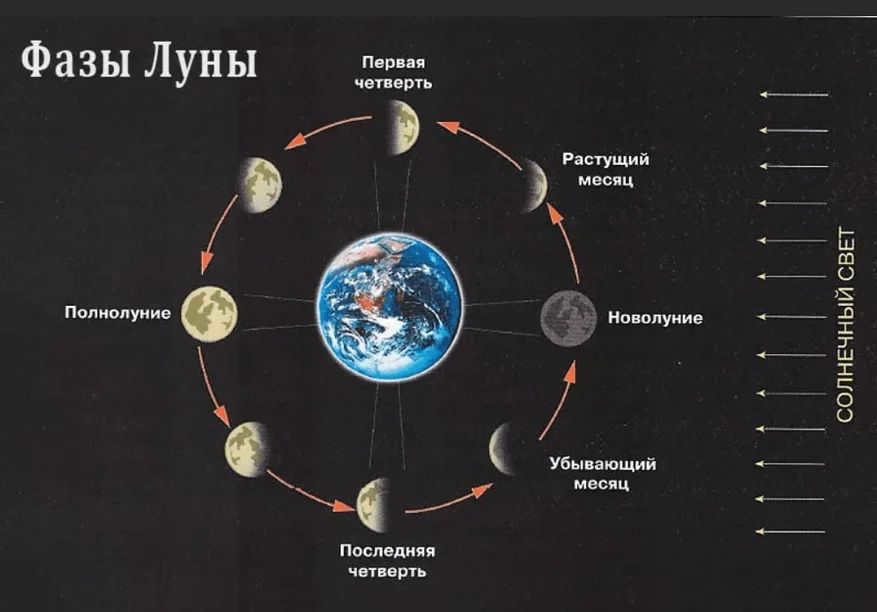
Observe the clouds or the mountains during sunset. The spherical nature of the Earth is the reason behind the phenomenon of the Sun still casting light on clouds and mountain peaks even after it has already set.

Next, we have the age-old conspiracy among sailors, who have long observed that when a ship approaches from the horizon, the tops of its masts are visible before the rest of the vessel. According to flat earth theorists, this is because the ship is emerging from under the water. On a flat surface, the entire ship should be visible, gradually shrinking into a point as it moves further away.
By the way, flat-earthers, what about the different constellations in the southern and northern hemispheres? It’s not just a question of rotation, but also the fact that there are completely different stars in each hemisphere, which wouldn’t be possible on a flat earth.
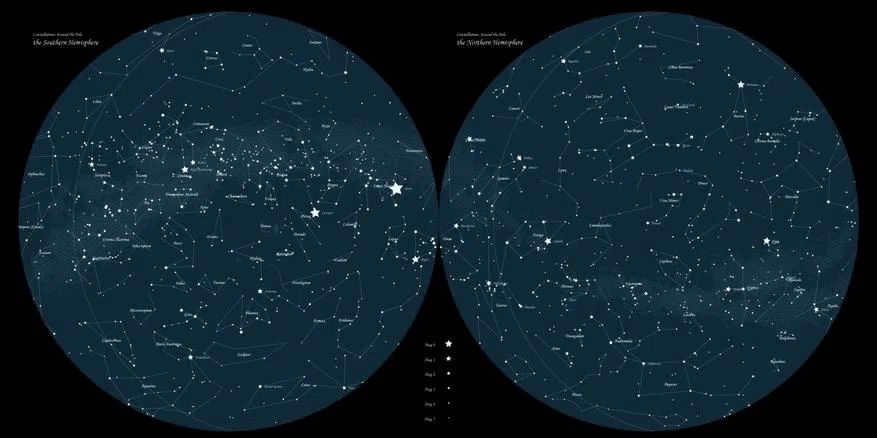
What is the reason that a photograph captured with a prolonged exposure at the equator displays the exact image that would be expected if the Earth were spherical?

Furthermore, when discussing celestial bodies, the concept of parallax for faraway stars can also be considered fictional. The phenomenon of redshift is another example. Those scientists seem to continuously fabricate and fabricate.
The rotation of the Earth is non-existent
The evidence provided is laughable. According to flat-earthers, gravity does not exist, and if the Earth were truly rotating, a person leaping into the air would simply land in a different location. In reality, the planet would have rotated beneath their feet while they were airborne.
Breaking this argument down is simple. If you stand on a cart and jump while it is moving, then yes, you will not land back in the cart. However, if you jump while already in motion with the cart, you will land back in the cart. When you are in the same acceleration system as our planet, you are moving in the same manner as the Earth itself. Since humans are on the planet and moving with it at the same speed and in the same direction, you can jump as much as you want.
However, if the planet suddenly stops, we will feel as if we are spinning with it. Think of a spinning disk, like the one used for exercising the back. If you put a lot of objects on the disk, gradually spin it up, and then stop it suddenly, everything on the disk would be flung farther away the faster the disk was spinning.

How do airplanes fly?
Oh no, airplanes don’t travel in a straight path like they would on a flat Earth, they travel in curved paths. You can easily understand this by using an orange and a pen at home. Simply draw the equator on the orange and then draw a straight line between two distant points on its surface. Now peel off the skin and straighten it out. What do you see? A curve, right? You can also observe this by looking at flight radar and seeing the curved flight paths of long-haul flights. It’s quite strange, isn’t it?
By the way, geography teachers who ask you to measure the distance between Moscow and Krasnoyarsk with a ruler don’t take this into consideration.

Another point raised by flat-earthers is that airplanes flying around a spherical Earth should have their noses pointing downwards while circling the Earth. However, it is often observed that airplanes have their noses slightly upwards after takeoff.
Moreover, according to flat-earthers, there is no gravity present, and they also question the existence of jet propulsion. They fail to consider the fact that the airplane is constantly falling towards the Earth, and the engines are responsible for pushing it upwards.

There are no space stations. This is due to the absence of space.
This is the most fascinating part, as it requires no mental effort, but rather a simple gaze through a telescope equipped with powerful magnification. It has been rumored that one can even catch a glimpse of a station in space.
Personally, I observe every evening with my naked eyes under a clear sky, as an entirely man-made object traverses the expanse above.

That’s likely the extent of it. The proponents of the flat Earth theory possess a plethora of additional proof indicating that the Earth is indeed flat, including the observation that the emblem of the United Nations depicts the Earth in a flat representation. Regrettably, if one were to print out said emblem and affix it to a hat made of tinfoil, the Earth depicted on the emblem would magically transform back into a spherical shape.


